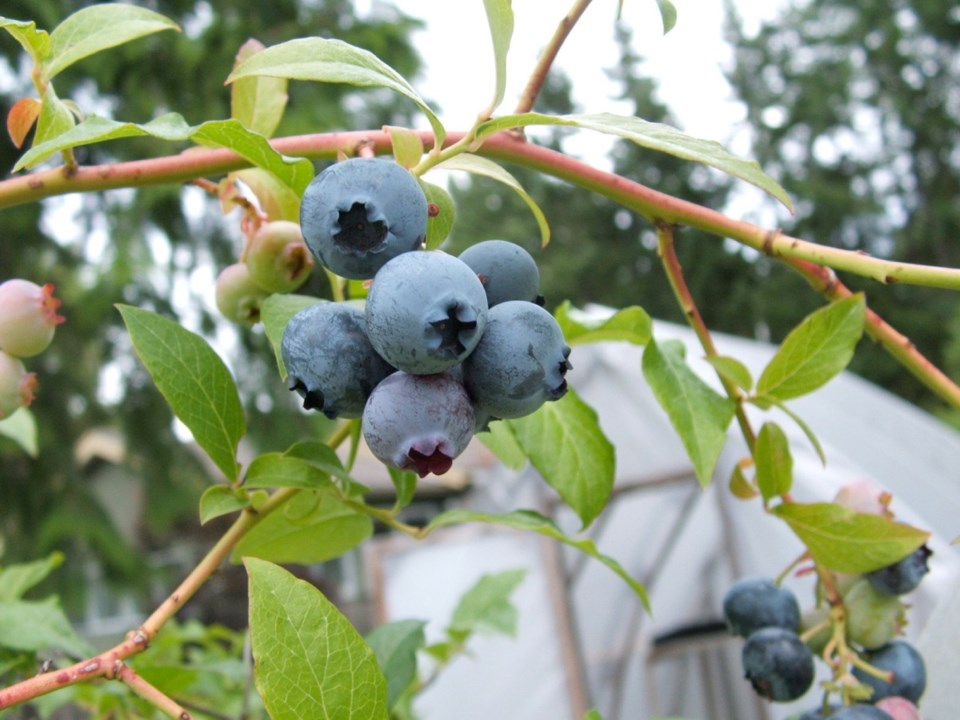Dear Helen: What were the tiny white worms that infested my strawberries and raspberries last year? Is there a way to prevent a repetition of this damage?
D.B.
The infestation was probably from a fairly new (to our region) fruit fly, the spotted wing Drosophila (SWD). The flies usually over-winter tucked into some safe harbour against cold weather, not to emerge until late spring, when they begin laying eggs in developing berries and stone fruits.
Their principal, though not exclusive, targets are raspberries, strawberries, blueberries, blackberries and cherries.
Linda Gilkeson, an entomologist, author and master gardener class instructor who lives on Salt Spring Island, has continued monitoring for the presence of the flies and reports that, in this mild winter, some of the flies have remained on the wing and appeared in her traps.
In a bulletin put out about a month ago, Linda urged gardeners to begin putting out traps early, to catch and dispose of as many of the flies as possible as an initial prevention measure against population build-up in the spring.
Previously, trapping was not commonly begun until early June.
It appears that SWD is gradually acclimatizing to cold temperatures. There are multiple, overlapping generations of the flies, which remain active through the fall.
Traps are easily made from any plastic container with a lid. Use a paper punch to make four to six holes just beneath the rim. Put an inch of apple cider vinegar in the container, replace the lid, and set the trap in or beside fruit and berry bushes, canes and trees. Replace the vinegar every week or two.
Peak times for trapping large numbers of the small, dark flies are summer and fall. Fall trapping helps to reduce populations that otherwise would over-winter.
Flies on the wing now are mainly females, probably already mated and set to lay eggs later. Males are distinguished by a spot on each wing.
Other controls: Pick and destroy infested fruit and berries. Pick bushes, canes and trees clean of all fruit and berries at the end of their productive seasons. Where possible, cover plants with insect netting, fine mesh fabric, or floating row cover once fruit or berries have formed.
GARDENEVENTS
Native plants. The Native Plant Study Group will meet on Thursday, March 19, at 7 p.m. in Room A 121 of UVic’s Cornett Building. David Fraser will present an illustrated talk on Plant Species at Risk and How They Came to be at Risk. Drop-in by donation. Students free. Parking cost $3.50 in parking lot No. 4. Details at npsg.ca.
Chrysanthemum meeting. The Victoria Chrysanthemum Society meeting scheduled for Saturday, March 21, has been cancelled.
Seedy in Campbell River. This annual event, at the Community Centre on March 21 from 10 a.m. to 1 p.m., will include a seed swap, vendors, demonstrations, plant and seed sales, and a “L’il Sprouts” corner for children. Admission free.
Seedy in Alberni. The Alberni Valley Seedy Saturday will take place indoors and outdoors at Char’s Landing, 4815 Argyle St. in Port Alberni, on March 21 from 10 a.m. to 2 p.m. Consult with master gardeners, swap seeds saved from the garden, attend workshops and visit vendor booths.
HCP workshops. The Horticulture Centre of the Pacific, 505 Quayle Rd. in Saanich, is offering the following workshops. Find details at hcp.ca. Register by phoning 250-479-6162.
• Introduction to Forest Bathing, Saturday, March 21, 10 a.m. to 12 p.m. Discover the health and wellness benefits of this practice. Cost of an introductory discussion, 10 to 11 a.m., is $5. Cost of the discussion and a forest bathing walk from 11 a.m. to 12 p.m. is $45.



